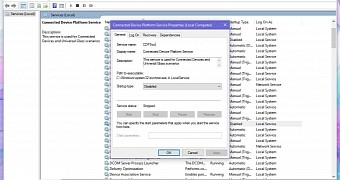The Windows 10 service responsible for collecting data and error information has been renamed in Threshold 2, but given the fact that Microsoft hasn't publicly announced the change, some are tempted to believe that the company has actually removed it completely.
Basically, the original name of the service in Windows 10 was Diagnostics Tracking Service (DiagTrack), and privacy-obsessed users who wanted to block any type of data from being sent to Microsoft disabled it completely after the debut of the RTM version in late July.
In fact, applications whose purpose was to block Windows 10 from phoning home also disabled this service, as it was one of the main ways for Microsoft to get bug and crash information from computers running the new OS.
So when Threshold 2 was released and the service was no longer there, many believed that Microsoft changed its mind and decided not to collect information from users' computers anymore.
But as TweakHound has noticed, the process actually uses a different name, so it's still there, only that it's harder to find.
Enter “Connected User Experiences and Telemetry”
The service is now called Connected User Experiences and Telemetry, and it's still enabled by default, but as far as the reasons for this name change are concerned, little is known at this point.
On the bright side, you can still disable it if you wish with just a few clicks.
First of all, type services.msc in the Start menu, hit the Enter key, look for the Connected User Experiences and Telemetry service, double-click it, hit the stop button, and then change the Startup Type setting to disabled.
We've reached out to Microsoft to find out about the reason for renaming this process, and we'll update the article should we get an answer. But you can bet that it has something to do with making it easier for users to understand the actual purpose of the service.

 14 DAY TRIAL //
14 DAY TRIAL //